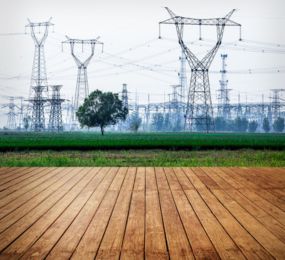Climate change poses significant challenges to power grids, making resilience planning essential for ensuring reliable and sustainable energy infrastructure. As extreme weather events become more frequent and severe, power grids must be prepared to withstand and quickly recover from disruptions.
Understanding the Impact of Climate Change:
Climate change affects power grids in numerous ways, including increased frequency of storms, flooding, heatwaves, and wildfires. These events can damage infrastructure, disrupt energy supply, and lead to prolonged outages. Developing resilience strategies is crucial to mitigate these impacts and maintain grid reliability.
Infrastructure Hardening:
One of the key strategies for resilience planning is infrastructure hardening. This involves reinforcing physical components of the grid, such as transmission lines, substations, and power plants, to withstand extreme weather conditions. Upgrading materials, using more durable designs, and burying power lines in vulnerable areas can reduce the risk of damage.
Decentralized Energy Systems:
Decentralizing energy systems through the integration of microgrids and distributed energy resources (DERs) enhances grid resilience. Microgrids can operate independently from the main grid during emergencies, providing localized power and reducing the impact of widespread outages. DERs, such as solar panels and battery storage, offer additional flexibility and reliability.
Advanced Monitoring and Predictive Analytics:
Utilizing advanced monitoring technologies and predictive analytics helps grid operators anticipate and respond to potential threats. Sensors, IoT devices, and real-time data analytics enable proactive maintenance, early detection of vulnerabilities, and rapid response to emerging issues. Predictive models can forecast the impact of climate events, allowing for better preparedness and resource allocation.
Emergency Response Plans:
Developing and regularly updating emergency response plans is vital for effective resilience planning. These plans should include procedures for rapid restoration of services, coordination with local authorities, and communication strategies to keep the public informed. Regular drills and training ensure that all stakeholders are prepared for various scenarios.
Policy and Regulatory Support:
Strong policy and regulatory frameworks are essential to support resilience planning efforts. Governments and regulatory bodies can incentivize investments in resilient infrastructure, establish standards for grid hardening, and promote research and development of innovative technologies.
Resilience planning for power grids is critical to mitigating the impacts of climate change. By hardening infrastructure, embracing decentralized systems, leveraging advanced technologies, and fostering strong policy support, power grids can become more robust and adaptive, ensuring a reliable and sustainable energy future.
Visit our website to register and secure your spot today! click here: https://bit.ly/3peklYc
For more information and group participation, contact us: [email protected]
















